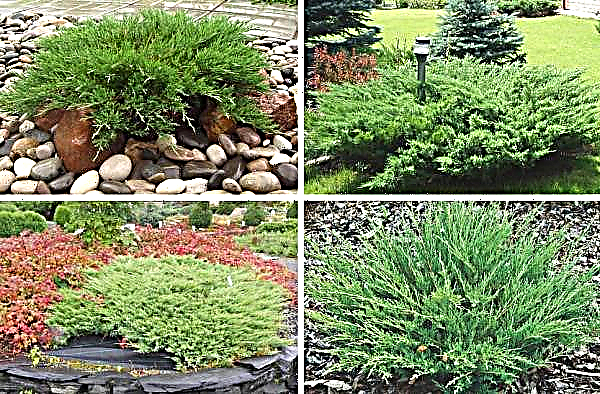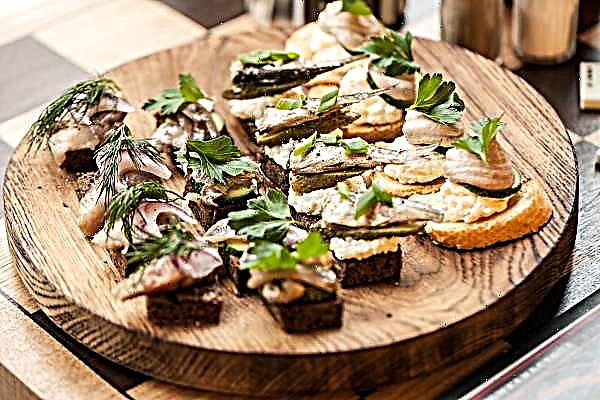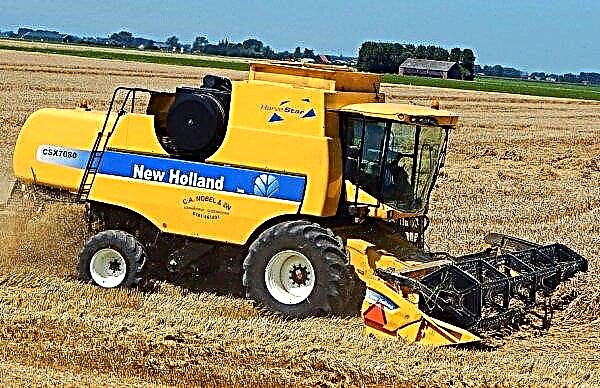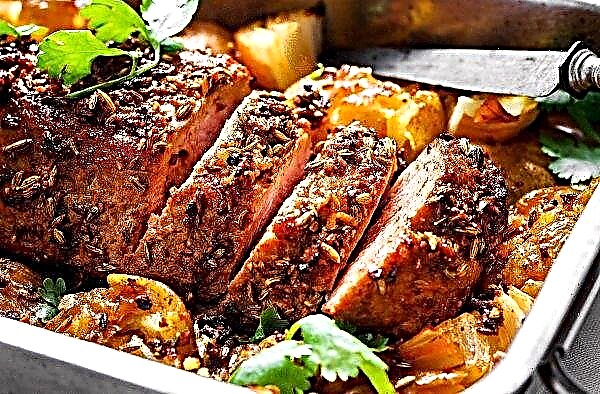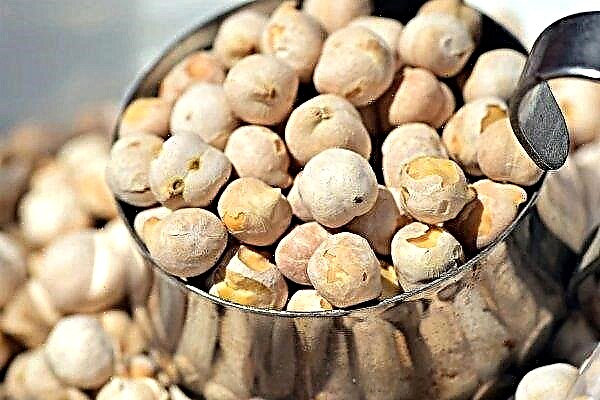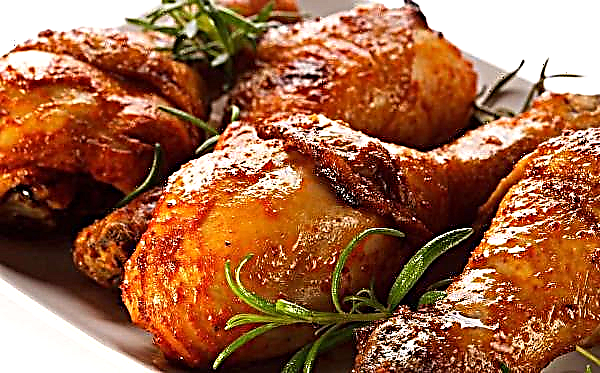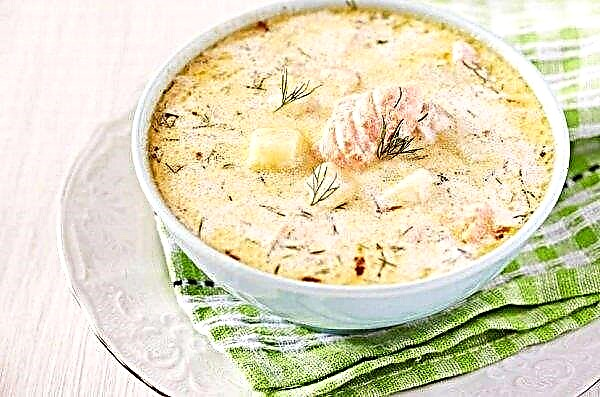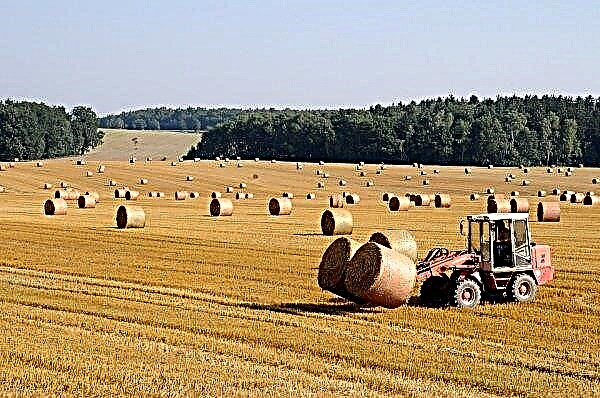In order to get an onion crop in the fall, it is usually planted in the spring, but there is another planting technology - in the winter, which is popular among experienced gardeners, as it is characterized by high productivity and excellent quality of the harvested vegetable. Let us consider in more detail the technology of planting onions in the winter, when it is better to plant a vegetable for a better wintering and a large harvest.
Benefits of Autumn Onion Planting
Winter onions are planted in autumn - this feature of cultivation is usually used in order to:
- it is reasonable to distribute the time of work on the bed - in the spring, almost all crops are planted, therefore, to save time, onions can be planted in the autumn;
- not to worry about storing a small sowing (oats), which winters very poorly, often dries out, and the gardener suffers losses of planting material and financial losses;
- to achieve good results in yield and quality of vegetables grown - they are superior in size to the bulbs grown from the seed set when planting in the spring;
- prevent the formation of arrows with peduncles on the plant, which stop the growth of the vegetable and as a result spoil a significant part of the crop;
- to achieve early harvest ripening (in July) and better preservation of the vegetable in the winter-spring period until a new crop is obtained;
- in the winter, there was a rejection of the weak and diseased sevka, which was planted in the fall, which guarantees a high quality summer crop;
- prevent the defeat of the vegetable by common diseases and pests. For example, the main pest, the onion fly, cannot kill onions planted for the winter, since during the awakening of the insect the bulbs already have a well-developed root system that prevents them from laying eggs;
- significantly save money, since in the fall planting material is sold several times cheaper than in the spring (this is due to the poor preservation of the seed).
Important! When choosing a variety for winter cultivation, be sure to pay attention to information on recommended cultivation regions: if warm regions are indicated there, such onions will freeze in winter.
What onions can be planted for the winter
Approaching the choice of planting material variety is responsible, so that the resulting crop meets the expectations of the preferred planting method. Therefore, we will consider whether all varieties can be planted in the winter or whether it is worth restricting ourselves to only certain specimens.
Consider the list of the best varieties for winter planting sowing:
- Radar - It has good cold resistance, is able to adapt to different weather conditions, has good taste characteristics: it is sweet with a speck. Fruits have a rounded shape, slightly flattened on both sides, the weight of one bulb reaches 100-200 g.

- Ellan - It belongs to super early varieties, onions have a rounded shape, in taste, sweetness prevails over pungency. Best suited for cultivation in a temperate climate, harsh winters may not survive. The variety is characterized by high yields, the weight of one bulb is 50-150 g.

- Danilovsky - well tolerates changes in weather conditions, has a soft, pleasant taste and aroma, sweet with a light speck, differs in the violet color of the plates. The weight of one bulb is up to 180 g.

- Zolotnichok - refers to mid-season varieties, winters well, has a rounded shape. Bulbs are small in size, weighing up to 80 g, their taste is characterized as semi-sharp, slightly sweet.

- Sturon - It is a medium early variety, characterized by high productivity, the weight of one bulb can reach 180 g. A pronounced sharpness goes well with sweetness and a pleasant aroma.

- Shakespeare - refers to the early varieties, the bulbs have a rounded shape, very juicy and dense, their weight is on average 50-100 g, taste with a light speck and sweetness.

Optimal terms and conditions for planting onions for the winter
In order for the wintering of onions planted in the fall to go well and only diseased and weak units of planting material to perish, it is necessary to consider recommendations regarding the optimal terms and conditions for planting. Planting is usually done a month before the air temperature drops below zero: this period may vary depending on the region - it can be either the beginning of autumn or the middle. In a temperate climate, the optimal time for planting is considered to be from October 5 to 30.
Important! Be sure to keep track of the weather forecast at least a week in advance — you can not plant sowing if strong frosts are planned, otherwise the bulbs will not have time to take root and simply die in the winter.
Suitable air temperature for planting sevka is + 5 ° C - if the indicators are higher, sevok will let greens. The topsoil for the normal rooting of the bulbs should have a temperature of + 3 ... + 4 ° C. Suitable for planting sevka is sunny and dry weather without wind. It is not recommended to start planting during rains and strong cold winds, as the risk of rotting of planting material increases.
Features of planting onions in the winter
High-quality prepared planting material, a correctly selected site and compliance with planting technology are mandatory nuances for obtaining a plentiful harvest.
Preparing bulbs for planting
It is not necessary to prepare the bulbs for planting in any special way: all that is required of you is to sort high-quality healthy specimens and discard diseased, cracked, damaged or dry units. Sowing is sorted by dividing into 2 categories: in the first category fall onions in diameter from 1 to 1.5 cm, and in the second - from 1.5 to 3 cm. All the remaining smaller onions (oats) are sent to a separate container.
Did you know? Onions were a valuable vegetable in ancient Egypt. On the tomb of Tutankhamun, archaeologists discovered an image of a bow dated 1352 BC. e.
In addition, a larger onion is found in the set, from 3 cm in diameter - it belongs to the sample. Ideal for planting is considered the onion of the first category and the oatmeal, from which large and high-quality bulbs grow. Feathers of the second category and sampling quickly let the feathers go, so they can also be planted to get high-quality greenery in early spring.
Choosing a place and preparing the garden
When choosing a suitable plot for growing vegetables, it is necessary to take into account some nuances:
- good ventilation of the territory;
- full illumination of the site - direct sunlight should fall on the bed throughout the day (no shadow is allowed);
- water stagnation is unacceptable on the site, so the lowlands where meltwater will accumulate in the spring are not suitable for planting a vegetable;
 The ideal soil for planting onions is chernozem. Well, the culture grows on loams and peatlands, if you follow the basic rules of care. The moisture content of the soil should be moderate: constant waterlogging or drought will adversely affect the future crop.
The ideal soil for planting onions is chernozem. Well, the culture grows on loams and peatlands, if you follow the basic rules of care. The moisture content of the soil should be moderate: constant waterlogging or drought will adversely affect the future crop.Before planting sowing, it is necessary to prepare the site. To do this, dig the soil, simultaneously introducing humus in the amount of 5 kg per 1 m² and mineral fertilizers (mix potassium salt - 10 g, superphosphate - 20 g per 1 m²). Immediately before planting, additional fertilizer is applied - ash (10 g per 1 m²).
Crop rotation rules
Planting vegetables on the same site should be made no more than 2 years in a row, then the place of planting should be changed. Onions grow well in the garden, where legumes, cucumbers, tomatoes, mustard, and potatoes were previously grown. For autumn planting, it is recommended to use zoned onions - this way you can get the maximum yield.
Did you know? The onion was the currency for the exchange of captured French knights from the Saracens during the Crusades, so the vegetable was necessarily in the food of the soldiers. For one captive knight, the French paid 8 bulbs.
Landing technology
In order for the harvesting process to be convenient, it is recommended to follow a certain planting technology. In addition, a properly planted onion tolerates wintering well and grows better. Next, consider how to plant onions in the garden. It is better to plant a vegetable in rows - it will be more convenient to look after it. Between each groove in which the bulbs will be planted, a distance of 15–20 cm is maintained. The depth of each groove should be 3 cm (for a vegetable of the first category and a wild shrimp). Bulbs are installed in the grooves, slightly deepening into the ground. There should be a distance of 5 cm between the bulbs. The onion of the first category and the sample are planted to a depth of 5 cm, keeping the distance between each copy 2 cm. Vertically installed bulbs are sprinkled on top of the soil without tamping.
The depth of each groove should be 3 cm (for a vegetable of the first category and a wild shrimp). Bulbs are installed in the grooves, slightly deepening into the ground. There should be a distance of 5 cm between the bulbs. The onion of the first category and the sample are planted to a depth of 5 cm, keeping the distance between each copy 2 cm. Vertically installed bulbs are sprinkled on top of the soil without tamping.
Onion care after planting in the winter
After planting the vegetable, the bed is left alone until spring, subsequent work is performed as the bulbs grow.
Loosening and thinning
Loosen the soil regularly, after natural rainfall or artificial irrigation. The procedure is performed to ensure good breathability of the soil and unhindered access of the root system to oxygen. In parallel with loosening, weeds are removed so that they do not interfere with the development of vegetables and do not take nutrients from the soil. Thick plantings are thinned out if there is such a need: a distance of 5-6 cm is maintained between the plants so that each vegetable has free space for active growth and increase in size. Thin out the beds should be as soon as the first shoots appeared.
Thick plantings are thinned out if there is such a need: a distance of 5-6 cm is maintained between the plants so that each vegetable has free space for active growth and increase in size. Thin out the beds should be as soon as the first shoots appeared.
How to feed
Under the condition of soil fertility, the feeding procedure can be excluded, but it is worth remembering that melt water leaches a large amount of nutrients from the soil, so feeding will not be superfluous. In April, to stimulate the growth of vegetables in the soil, it is recommended to apply a solution of mullein and bird droppings in equal proportions (dilute the fertilizer with water - 1 liter of the nutrient mixture 10 liters of water). Water the soil evenly, fertilizing the grooves in which the onions are planted.
After such fertilizer, the earth should be covered with a plastic film, fixing it with bricks on all sides. After emergence, the film is removed. The second top dressing is carried out in mid-May - at this time nitrophoska in the amount of 1 tbsp. Is introduced into the soil. l on 1 m². In early June, when the bulbs begin to grow actively, it is recommended that a mixture of superphosphate and potassium sulfate be added to the soil in equal amounts, using according to the recommendations on the package.
Watering
After the autumn planting, the vegetable cannot be watered - water will stimulate the growth of shoots, which can provoke the death of the plant. You can start watering the onions only in spring, when the soil dries well from melt water. Watering onions is recommended 1 time in 6 days, provided there is no natural rainfall. In order for the seed to receive a sufficient amount of moisture, watering should be plentiful enough, in the amount of 30 liters per 1 m². Water should not be applied under the root of each plant. And in the row-spacing - in this case, the vegetable will take a sufficient amount of liquid. With regular natural precipitation, the artificial application of water stops, so as not to provoke rotting of the bulbs from an excess of moisture. 2 weeks before the planned harvesting date, artificial irrigation is completely stopped: if you neglect this recommendation, you can get a watery crop that will be very poorly stored.
And in the row-spacing - in this case, the vegetable will take a sufficient amount of liquid. With regular natural precipitation, the artificial application of water stops, so as not to provoke rotting of the bulbs from an excess of moisture. 2 weeks before the planned harvesting date, artificial irrigation is completely stopped: if you neglect this recommendation, you can get a watery crop that will be very poorly stored.
Protection against diseases and pests
The relative protection of the vegetable from the onion fly allows you to save most of the crop, but in order to completely protect the vegetable, it is recommended to resort to additional protection. In addition, there are many other pests and diseases that can affect onion beds.
Consider the most dangerous diseases that can attack onions:
- peronosporosis - manifests itself after harvest, affecting the bulbs during storage, which leads to large losses. The disease can be detected by the mycelium, which develops on the deciduous part in the form of white spots, which provokes their yellowing and drying out. An effective method of combating the disease is the preventive spraying of the vegetable when the onion feathers reach a height of 10-15 cm. The drug for the preventive spraying is Fitosporin, which is used according to the instructions on the package. If signs of peronosporosis are found on the plant, the plants are sprayed with a 1% solution of Bordeaux fluid and a 0.5% solution of copper chloroxide. Processing is carried out every week during the rainy season and once every 2 weeks in dry weather for a month;

- gray rot - able to hit the crop during storage. Affected bulbs become soft at the neck, a gray coating is visible, healthy bulbs can become infected from patients. There are no drugs to combat the disease, therefore, to avoid damage, it is necessary to dry the harvest well and store the vegetable in a dry, well-ventilated area.

The main pest of the vegetable is the onion fly, which it is recommended to combat by cultivating the soil with tobacco dust or sprinkling with salt in an amount of 100 g per 1 m², then watering after that.
Do I need to shelter landing for the winter?
After planting the vegetable in the autumn, the bed is mulched with spruce branches, straw, dry sawdust or peat. The layer of mulch should be at least 7-10 cm, while this thickness of the shelter will protect the vegetable from frost and excess melt water. It is necessary to remove the shelter as soon as the snow has melted, so that the earth warms up faster. Thus, planting onions in the winter is a great option to get a plentiful harvest of large vegetables, subject to the recommendations for planting and care, which are described in the article.









